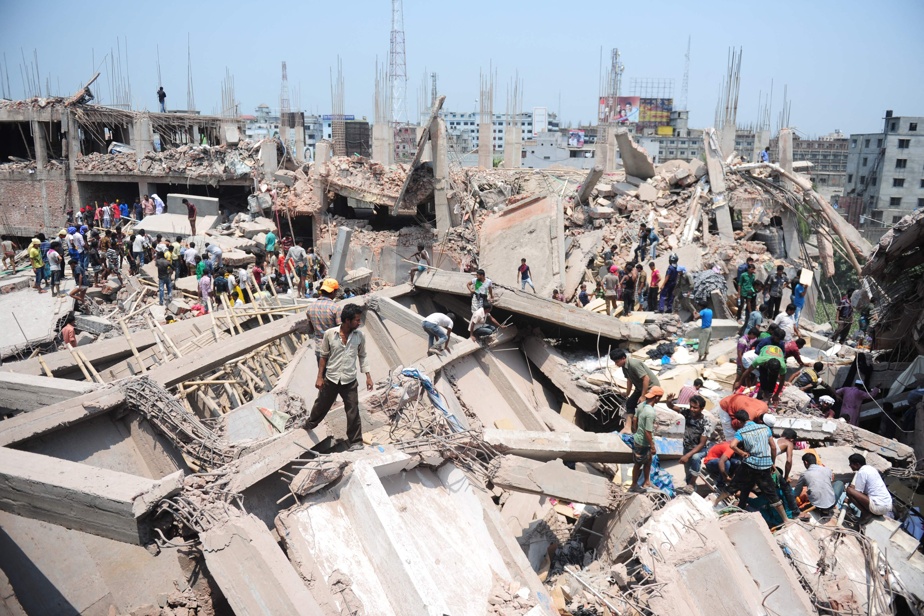(Savar) Bangladeshi worker Sumi Akhter was worried about entering the garment factory building which was in danger of collapsing, but management threatened to deprive her of her salary if she did not go to work. An hour later, she was fighting for her life under the rubble of Rana Plaza.
More than 1,130 people died, including Ms. Akhter’s mother, when the seven-storey building collapsed in Savar, west of Dhaka, in Bangladesh’s worst industrial disaster on April 24, 2013.
Rescuers spent several weeks trying to find the bodies and survivors in the rubble.
Sumi Akhter and her mother, a worker like her at Rana Plaza, had hesitated on the day of the tragedy, to return there for fear that the cracked building would collapse. A brief evacuation had taken place the day before.
“They could have told us, ‘don’t enter the building,'” she told AFP, “so many people could have been saved. »
On the contrary, management demanded that employees return to work despite the obvious risks, she continues.
The tragedy highlighted the deplorable working conditions of the four million workers making clothes for Western retailers.
More than 2,000 people made it out alive, but many suffered deep physical and psychological trauma.
“We are alive,” Ms. Akhter adds, “but we are slowly dying.”
According to an Action Aid survey, around 80% of survivors have never worked again.
Sumi Akhter had a leg amputated and never found a job. She received 1 million taka (8,500 euros) in compensation but, according to her, her medical expenses and job loss exceed this amount.
“All I want is justice,” she argues.
A court in Bangladesh has charged 38 people with murder, including Sohel Rana, an influential ruling party politician and owner of Rana Plaza.
But the trial is so bogged down that prosecutor Bimal Samadder does not expect a verdict for several years.
According to him, testimonies indicate that people were “forced” back to work despite the obvious danger.
“The managers, owners of the workshops and the owner of the building threatened them that they would not pay their salaries if they did not work,” he says.
Najmul Huda, a journalist who filmed the cracks foreshadowing the disaster, says frustrated that he has not yet been called to testify, three years after submitting his video in court.
On the other hand, he was arrested for his reports on the workers’ demonstrations in the garment factories and spent months in prison.
Accusing the police of torturing him in police custody, he believes his arrest is linked to his Rana Plaza video.
“If I didn’t have these images of the cracks, the owners of the workshops and Sohel Rana would have claimed that the building was structurally correct,” he explains.
“The images proved that the disaster was man-made. »
The Rana Plaza collapse prompted western brands, unions and manufacturers to jointly create watchdog bodies that have had considerable success in improving safety standards.
The tragedy has sparked a wake-up call that has helped clean up a poorly regulated industry, admits garment factory owner Nafis Ud Doula, a member of the watchdog for safety standards.
“We all realized that our shops shouldn’t run the way we run them,” he continues.
The security overhaul cost the industry more than $2 billion, which has since enjoyed phenomenal growth in export orders, he said.
Textile exports have tripled to $45 billion in the past decade. Average wages have also tripled.
On the now vacant lot, where the Rana Plaza once stood, the unions erected a monument to the workers who died in the collapse.
“People don’t think about Rana Plaza anymore. No one talks about it anymore,” laments Laxmi Soren, a worker, “but when I walk past the ruins, my heart aches. »

